"Exorcists on the Moon Islands"
By Xu Yueguan
[Comoros] Kamal Said Abdallah
Liane, a mother of five, was on the beach, enjoying the refreshing sea breeze that blew gently over the Comoros Islands, carrying the fragrance of climbing lang-lang. She was wearing a short skirt, something that was unimaginable till recently.
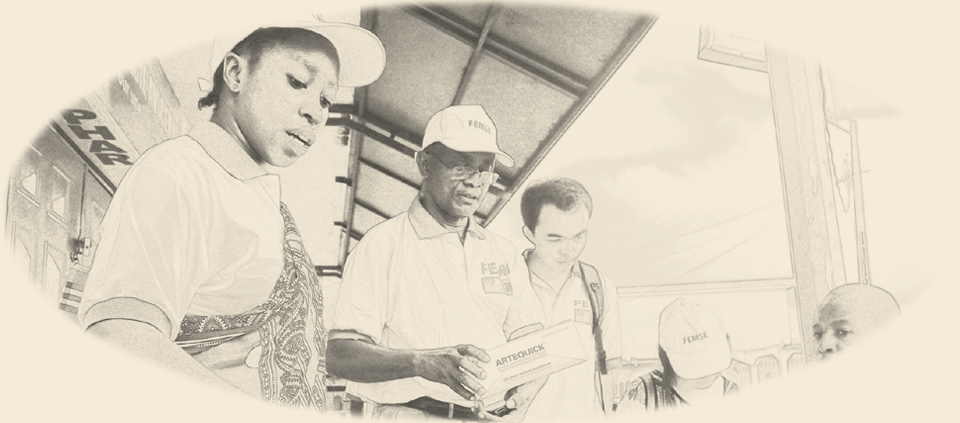
A few years ago, even during the hot summer, everyone wore long-sleeved clothes and trousers outdoors and dared not roll up the sleeves or legs. If they exposed any skin, they were bound to be bitten by mosquitoes carrying the malaria parasite and get the dreaded disease. Comorans called it "the devil that brings cries and screams".
Today, when she sees people enjoying the summer on the beach in shorts or short skirts, Liane remembers the days when the island ers suffered from malaria and their fight against the disease with Chinese medical workers.
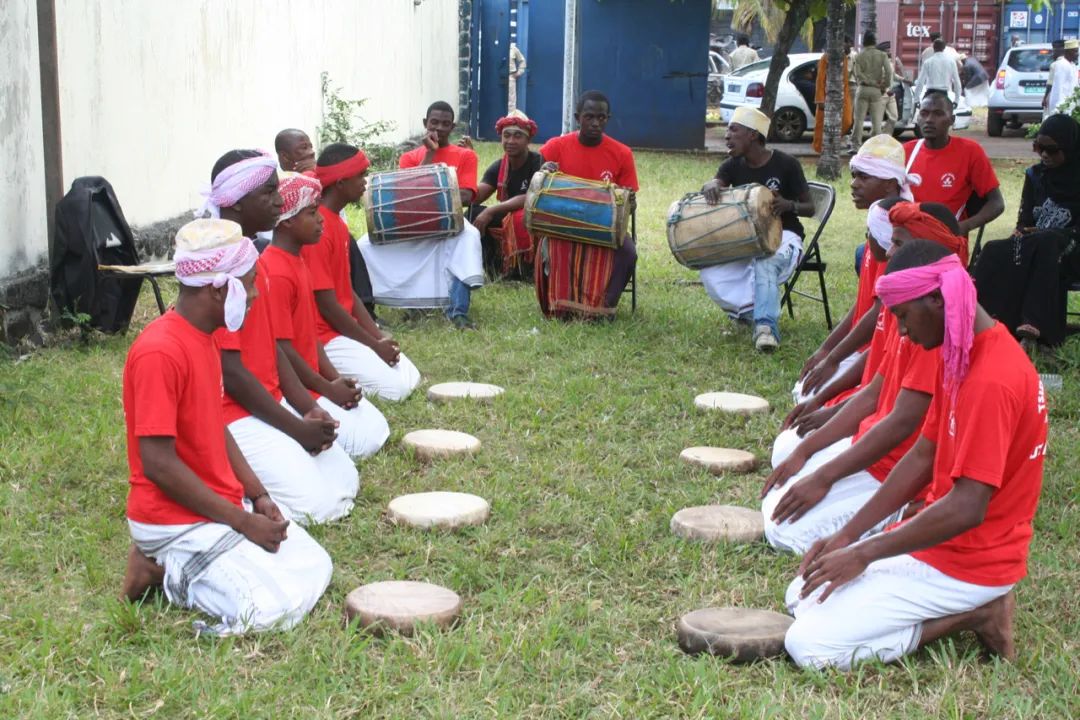
A traditional Comorian dance
Malaria Scourge on the Moon Islands
"Comoros" means "moon" in the Arabic language, so the country is also called the Moon Islands. It comprises four islands with beautiful scenery – Grande Comore, Anjouan, Mohéli, and Maore, known as the four jewels of the Western Indian Ocean.
However, the islanders suffered from malaria for decades due to the climate and backward infrastructure. Some of the old people remember the scary experience of illness when they were younger: "I felt I was burning and freezing alternately, accompanied by tinnitus and shivers. And it cost a lot of money to get cured."
At that time, malaria was the deadliest disease in Comoros. According to data from the Comoros Ministry of Health, in 2006, there were 108,000 cases of malaria, meaning 14 out of every 100 people were infected. Malaria patients accounted for more than 38 percent of outpatients and 60 percent of inpatients in hospitals. Malaria was a major obstacle to local economic and social development.
However, Comorans were unable to prevent and control malaria; all they could do was to wear long clothes. Children under five were especially susceptible to malaria, with high mortality. Parents did not name their children until they were over five for fear of losing them.
In 2006, at the invitation of the Government of Comoros, the Chinese Government launched a malaria prevention and control project in Comoros. It selected the Guangzhou University of Chinese Medicine, which has long been engaged in malaria research, and the Guangdong New South Group to form an anti-malaria team that would base their work on the antimalarial drug artemisinin. After the World Health Organization (WHO) approved the project, the team went to Mohéli to start the pilot work.
Although mentally prepared for the local situation, they were still shocked when they arrived on the island.
Mohéli had all the ideal conditions for mosquitoes to breed profusely: high temperature throughout the year, abundant rain, lush vegetation and mud after the rainy season.
People's living conditions were difficult too. The household water supply stopped every three to five days. Once there was no water for 21 days, the longest period. The local food consisted mostly of fried stuff while vegetables were considered luxury items. As a result, some members of the team developed ulcers in the mouth.
But the biggest problem came when they started to work. The team encountered opposition from all sides as the islanders did not understand what they were doing.
"What are they spraying?"
"We are not sick. Why should we take medicine?"
The anti-malaria team had decided to start with prevention and treatment based on the local situation. On one hand, they would spray insecticides to kill mosquitoes and prevent a resurgence of malaria; on the other hand, they would ask those who had not been infected to take Artequick, an artemisinin combination drug developed by Chinese specialists. It would produce quick and lasting effects, and reduce the probability of infection even if people were bitten by mosquitoes. By addressing the root causes of the disease, the team aimed to control the possibility of infection and gradually eliminate malaria from the island.
However, the locals' long-standing fear of malaria made them doubtful of the team's plan and the anti-malaria work came to a standstill due to various obstacles.
A New Approach
"In dealing with malaria, we have a focus at each stage. The disease spreads widely on Mohéli, so treatment alone is not enough. The key is prevention. To eliminate malaria from this island, it is necessary to ensure everyone takes the medicine," Dr. Deng Changsheng said. And he did what he said.
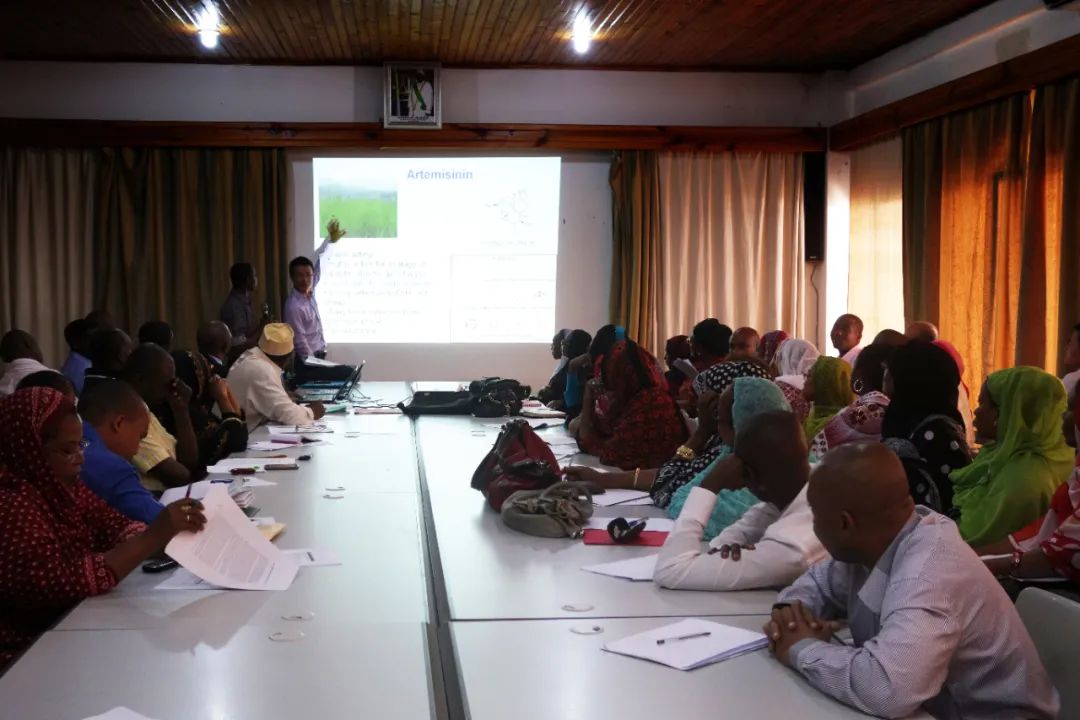
The Chinese anti-malaria team and local health authorities attend a seminar on the malaria elimination project.
In the following two months, he and his team visited all the health departments in Comoros and held seminars with them to promote the Fast Malaria Elimination with Artequick project. In addition, they visited all the 27 villages around Mohéli, reaching almost every household to tell villagers about the project and persuading religious elders to make the rest take the medicine.
"We visited all the villages, even the ones the Comorian president has never been to," Dr. Deng said with a smile, "The residents didn't trust us, nor Chinese medicine and its theory. So we tried to convince them."
Their hard work finally paid off. Their plan eventually won the support of Comoros' health authorities and the trust of the people. After two years of preparations, the China-Comoros project of Fast Malaria Elimination with Artequick was officially launched on Mohéli. On that day, the team's technicians and volunteers from each village visited every household and gave free Artequick to everyone.
Mass drug administration led to gratifying results in Mohéli. The plasmodium malaria is a parasitic microorganism that causes malaria in humans. The presence of plasmodium carriers, one of the important indices for malaria prevalence, dropped from 23.3 percent before mass drug administration to 0.33 percent afterwards. Another index, the mosquito-borne infection rate, stayed at zero from the fourth month after mass drug administration.
Such results were due to the cooperation between the dedicated anti-malaria team and the islanders.
During that period, the locals flocked to the anti-malaria team to learn about malaria prevention. Together with them, the team members distributed Artequick door to door. They careful ly explained to every villager the importance and method of drug administration, and ensured that everyone was taking the medicine.
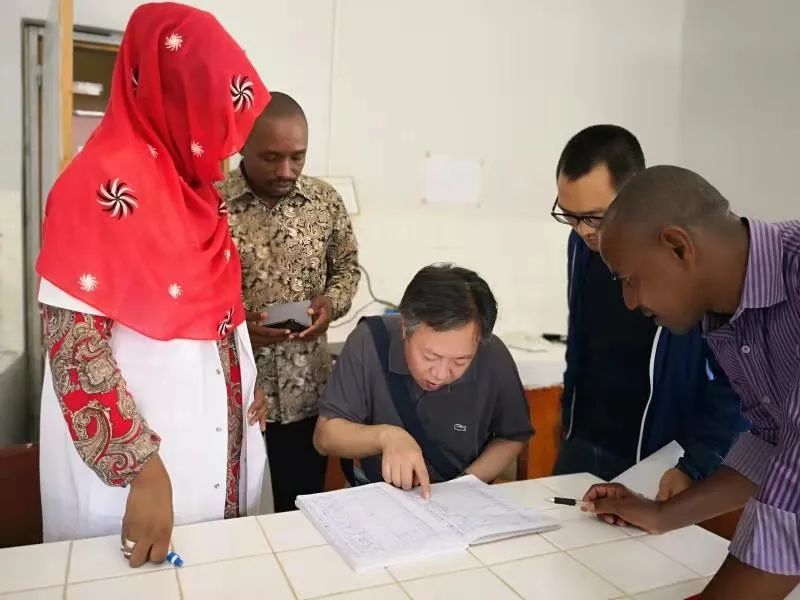
A Chinese expert reads the records of malaria cases from the high transmission areas in Comoros.
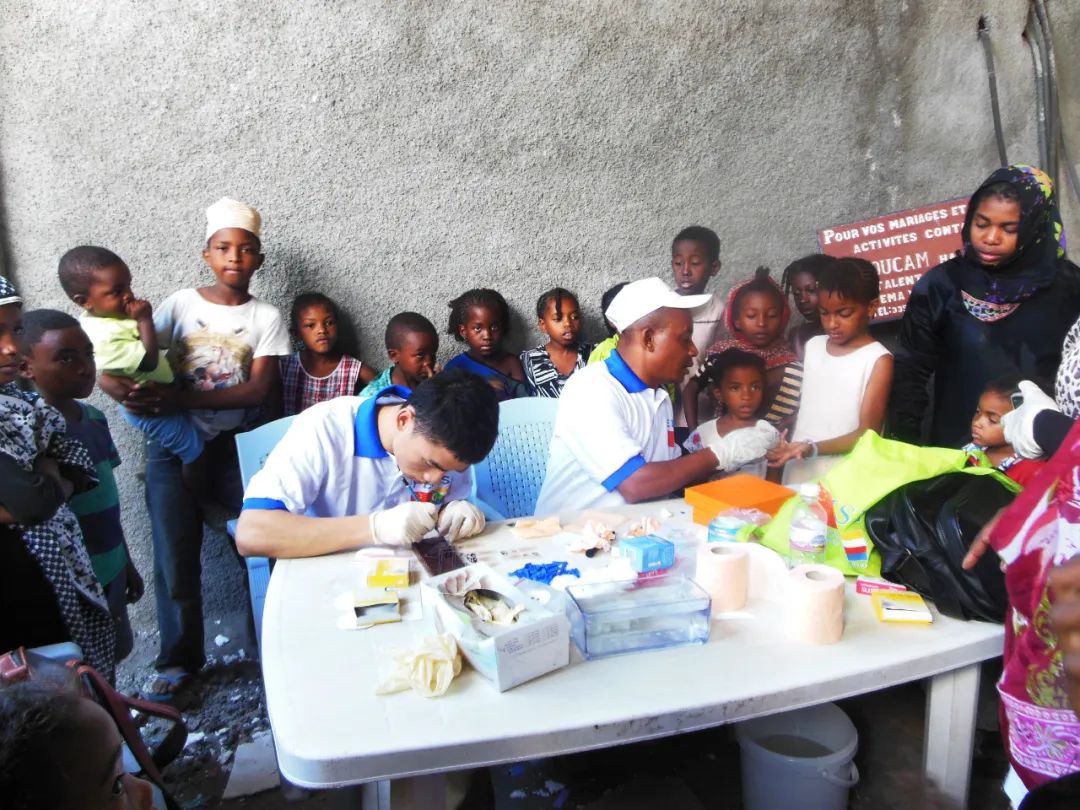
Anti-malaria workers take blood samples to collect malaria data.
The islanders began to call the team members the "Exorcists on the Moon Islands".
More and more people participated in the training program organized by the team and learned about systematic malaria prevention. After passing exams and evaluation, they became anti-malaria village workers, whose important but arduous mission was to record their village's situation and villagers' drug administration and report it in time. This was to ensure that the beautiful island would not be plagued by malaria even after the Chinese team left.
By 2014, the anti-malaria team had trained 236 malaria control professionals for Comoros, and over 4,000 anti-malaria village workers.
A Helping Hand from Comoros
The first World Malaria Day was observed on April 25, 2008. At an event organized by the Government of Comoros, then Vice President Ikililou Dhoinine and Director of the National Anti- Malaria Project Affane Barcar told the large gathering that the efforts of China and Comoros had brought malaria under control in Mohéli and would eliminate it in the near future.
Liane, who is an anti-malaria worker, and her five daughters were among the audience, witnessing the historic moment together. She held her youngest daughter's hand tightly, tears in her eyes.
One month later, a massive earthquake struck Wenchuan, a county in southwest China, causing heavy casualties. Liane was heartbroken when she heard about it.
Although she could barely make ends meet herself, she donated EUR50 (USD59) from her meager salary for rescue and rehabilitation in Wenchuan through the Chinese Embassy in Comoros, along with a letter to the Chinese ambassador.
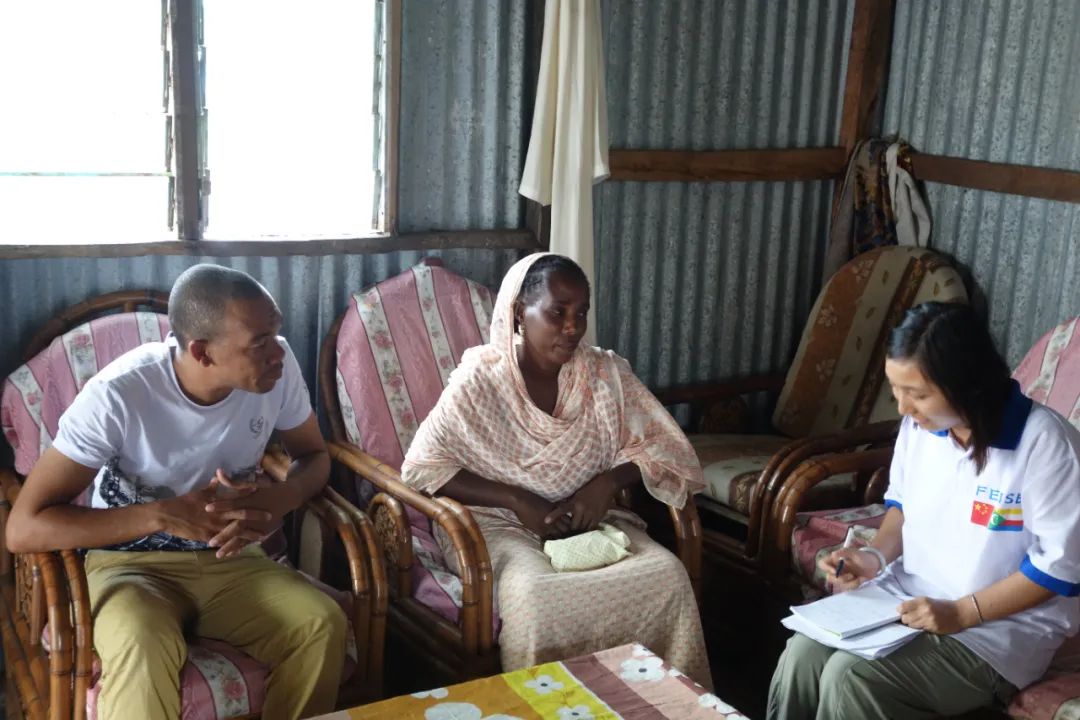
Revisiting a malaria patient
She wrote: "I have five daughters. If you need them, they can serve as volunteers at any time to support the quake-hit areas in China. The Chinese have helped us and saved our people from malaria. I sincerely thank you! Now that the Chinese need help, I should do my best to give a hand."
She said later: "I saw some photos of the disaster-hit areas. People were taken away from their family members, a matter of great pain. My sister died of malaria at a very young age, and my youngest daughter got malaria at the same age. I was very scared because malaria is a devil that kills. Fortunately, the Chinese experts came and cured my daughter. They helped me and my daughter was not taken away from me. Now in return, I want to help the Chinese."
Hope for the Moon Islands
About 200 Chinese specialists worked in Comoros in different periods, helping the islanders eliminate malaria, completing a census and undertaking other complicated tasks. With the unremitting efforts of both sides, malaria has been eradicated from the islands of Mohéli and Anjouan, and is under control in Grande Comore.
Then Vice President of Comoros Fouad Mohadji conferred presidential medals on two Chinese malaria specialists, Li Guoqiao and Song Jianping, the first time the honor was given to foreigners. As Mohadji said, the Fast Malaria Elimination with Artequick project has saved the lives of Comorans. The archipelago, free of malaria, has seen tourism and national income grow. It has directly or indirectly saved USD11 million for Comoros.
The successful malaria prevention and control in Comoros is the result of mass administration of Artequick, mass prevention and treatment, and source eradication. The Chinese team adopted an innovative approach – from individual treatment to mass drug intervention, from killing asexual parasites to eliminating gametophytes – and gradually established a malaria control program with Chinese characteristics. This is an outstanding example of helping a country quickly control the malaria epidemic through mass drug intervention.
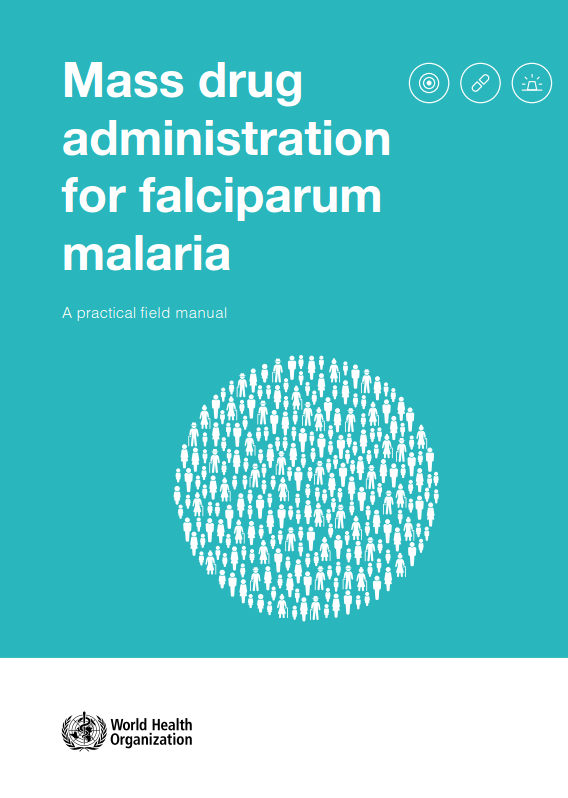
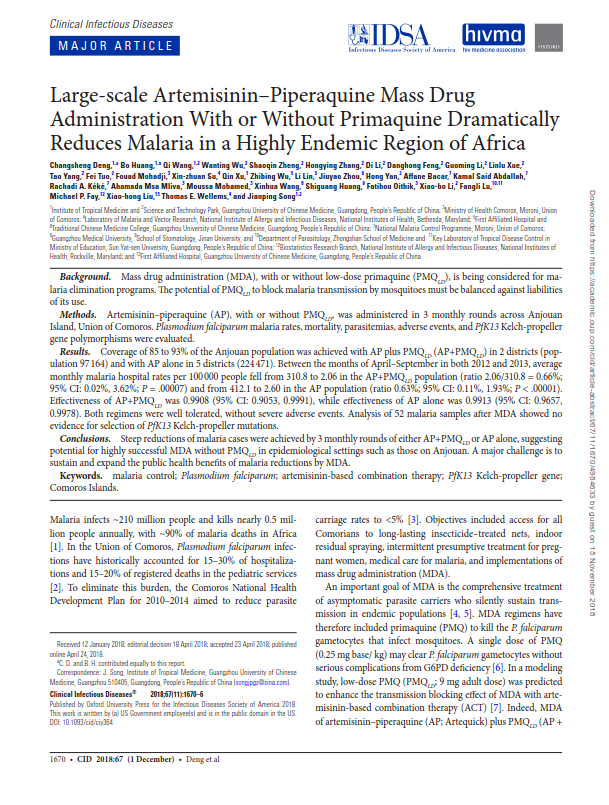
June 2018, the results of the malaria elimination project on Anjouan, Comoros are published in Clinical Infectious Diseases, a leading international journal on infectious diseases; November 2016, researcher Song Jianping is invited to participate in writing a WHO field manual, Mass Drug Administration for Falciparum Malaria. The compound artemisinin therapy has gradually been accepted by WHO and African countries.
Liane's eldest and second eldest daughters now work as local guides for tourists visiting Mohéli. Liane now wears short clothes in summer, which are both comfortable and convenient.
FOR MORE
Project Overview
The China-Comoros project of Fast Malaria Elimination with Artequick was implemented by a Chinese team comprising members from Guangzhou University of Chinese Medicine and Guangdong New South Group. After two years of preparations, it was officially launched on Mohéli, Comoros in November 2007. Mohéli then had a population of 37,000.
The project received strong support from then President of Comoros Ahmed Abdallah Mohamed Sambi and his vice president Ikililou Dhoinine, who took the lead in taking the prescribed medicine. The WHO headquarters supported the project by urging the Government of Comoros to establish and maintain an effective anti-malaria system.
After Mohéli, the project was started in Anjouan (population: 320,000) in 2012, and in Grande Comore (population: 400,000) in 2013. It not only contained malaria transmission, but also turned the country from a high endemic area to a low one in a short period of time, and successfully completed the task of fast malaria control in Comoros. Mohéli was cleared of malaria (no indigenous infections) in 2014, followed by Anjouan in 2015.
Anti-malarial cooperation has become a highlight of the cooperation between China and Comoros. The experience and practices have attracted worldwide attention and have been promoted and implemented in São Tomé and Príncipe, Papua New Guinea, Kenya, Togo, and the Gambia.


